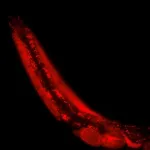(Press-News.org) A research team has examined the link between adverse childhood experiences and the risk of mental health problems later in life, according to a study in JAMA Psychiatry. The researchers from Karolinska Institutet and University of Iceland have found that the risk of suffering from mental illness later in life among those experiencing significant adversity in childhood can be partly explained by factors shared by family members, such as genetics and environment.
Several previous studies have shown that people who have experienced various types of adverse childhood experiences have a higher risk of suffering from psychiatric illness later in life. Now, a new study from Karolinska Institutet, using a special type of twin research design, can confirm the link, show a clear dose-response relationship and at the same time broaden the picture. The researchers can now show that there are also significant genetic and environmental factors that play a role and contribute to mental illness.
The researchers used three different cohorts of the Swedish Twin Registry, comprising over 25,000 individuals. The twins' responded to a large web-based questionnaire and answered questions about different types of adverse childhood experiences including family violence, emotional abuse or neglect, physical neglect, physical abuse, sexual abuse, rape and hate crime. In addition, information about adult psychiatric disorders was obtained from the Swedish Patient Registry.
"These are of course very difficult questions to answer, but this is the best data source we have access to," says Hilda Björk Daníelsdóttir, a doctoral student at the University of Iceland and visiting doctoral student at the Institute of Environmental Medicine at Karolinska Institutet and the study's first author.
By identifying twin pairs who reported different experiences of abuse while growing up in the same family and then following those who later received a psychiatric diagnosis, the researchers have been able to sort out how much of the increased risk is due to the abuse itself and how much is due to genetics and environment.
“Most previous studies on the mental health effects of childhood adversity have not been able to take these things into account. Now we can show that the increased risk of mental health problems after adverse childhood experiences can be partly explained by factors shared by family members, such as genetic factors or factors in the childhood environment,” says Hilda Björk Daníelsdóttir.
She argues that this finding should therefore lead to health care interventions addressing risk factors within the whole family, not just the affected child or children.
The more different types of childhood adversities individuals experienced, the higher the risk was of receiving a psychiatric diagnosis later in life. The researchers can also show that sexual abuse and rape in childhood as well as having experienced three or more types of adversities were the experiences most strongly linked to future mental health problems. This is something that is also important knowledge when treating vulnerable children and their families.
“I hope that our study can raise awareness of childhood circumstances as possible causes of psychiatric disorders in adulthood and how to best address them,' says Hilda Björk Daníelsdóttir.
The research was funded by the European Research Council, the Icelandic Research Center and the EU's Horizon 2020.
Publication: "Adverse Childhood Experience and Adult Mental Health Outcomes" Hilda Björk Daníelsdóttir, Thor Aspelund, Qing Shen, Thorhildur Halldorsdottir, Jóhanna Jakobsdóttir, Huan Song, Donghau Lu, Ralf Kuja-Hallkola, Henrik Larsson, Katja Fall, Patrik K. E. Magnusson, Fang Fang, Jacob Bergstedt, Unnur Anna Valdimarsdóttir. JAMA Psychiatry online March 6, 2024, doi: 10.1001/jamapsychiatry.2024.0039
END
New study may broaden the picture of the consequences of childhood adversity
2024-03-06
ELSE PRESS RELEASES FROM THIS DATE:
Revealing the evolutionary origin of genomic imprinting
2024-03-06
Some of our genes can be expressed or silenced depending on whether we inherited them from our mother or our father. The mechanism behind this phenomenon, known as genomic imprinting, is determined by DNA modifications during egg and sperm production. The Burga Lab at the Institute of Molecular Biotechnology (IMBA) of the Austrian Academy of Sciences uncovered a novel gene regulation process, associated with the silencing of selfish genes, that could represent the first step in the evolution of imprinting. Their discovery, reported in Nature, ...
Universal tool for tracking cell-to-cell interactions
2024-03-06
One of the fundamental goals of basic biology is understanding how diverse cell types work in concert to form tissues, organs, and organ systems. Recent efforts to catalog the different cell types in every tissue in our bodies are a step in the right direction, but only one piece of the puzzle. The great mystery of how those cells communicate with one another remains unsolved.
Now, a new paper in Nature describes uLIPSTIC, a tool capable of laying the groundwork for a dynamic map tracking the physical interactions between different cells—the elusive cellular interactome. The authors have been perfecting the technology since 2018 and the latest iteration ...
Synthetic DNA sheds light on mysterious difference between living cells at different points in evolution
2024-03-06
“Random DNA” is naturally active in the one-celled fungi yeast, while such DNA is turned off as its natural state in mammalian cells, despite their having a common ancestor a billion years ago and the same basic molecular machinery, a new study finds.
The new finding revolves around the process by which DNA genetic instructions are converted first into a related material called RNA and then into proteins that make up the body’s structures and signals. In yeast, mice, and humans, the first step in a gene’s expression, transcription, proceeds as DNA molecular “letters” (nucleobases) are read in one direction. While 80% of the human genome ...
AI can speed design of health software
2024-03-06
Artificial intelligence helped clinicians to accelerate the design of diabetes prevention software, a new study finds.
Publishing online March 6 in the Journal of Medical Internet Research, the study examined the capabilities of a form of artificial intelligence (AI) called generative AI or GenAI, which predicts likely options for the next word in any sentence based on how billions of people used words in context on the internet. A side effect of this next-word prediction is that the generative AI “chatbots” like chatGPT can generate replies to questions in realistic language, and produce clear summaries of complex texts.
Led ...
Shrinking technology, expanding horizons
2024-03-06
The National Institute of Standards and Technology (NIST) and its collaborators have delivered a small but mighty advancement in timing technology: compact chips that seamlessly convert light into microwaves. This chip could improve GPS, the quality of phone and internet connections, the accuracy of radar and sensing systems, and other technologies that rely on high-precision timing and communication.
This technology reduces something known as timing jitter, which is small, random changes in the timing of microwave signals. Similar to when a musician is trying to keep a steady beat in music, the timing of these signals can sometimes waver a bit. The researchers ...
Edge-nitrogen doped porous carbon for energy-storage potassium-ion hybrid capacitors
2024-03-06
They published their work on March. 4th in Energy Material Advances, a Science Partner Journal (https://spj.science.org/journal/energymatadv).
"The development of cost-effective and high-performance electrochemical energy storage devices is imperative," said paper's corresponding author Wei Chen, a professor in the School of Chemistry and Materials Science, University of Science and Technology of China (USTC). "Currently, lithium-ion batteries still dominate the market, but they are limited in both lithium as a resource and in their power densities."
Chen ...
Revolutionary elephant iPSC milestone reached in Colossal’s Woolly Mammoth Project
2024-03-06
Dallas, TX – March 06, 2024 - Colossal Biosciences (“Colossal”), the world’s first de-extinction company, announces today that their Woolly Mammoth team has achieved a global-first iPSC (induced pluripotent stem cells) breakthrough. This milestone advancement was one of the primary early goals of the mammoth project, and supports the feasibility of future multiplex ex utero mammoth gestation.
iPSC cells represent a single cell source that can propagate indefinitely and give rise to every other type of cell in a body. As such, the progress with elephant iPSCs extends far beyond ...
JAMA study finds facilities treating poor patients penalized by CMS payment model
2024-03-06
INDIANAPOLIS – A new study of more than 2,000 dialysis facilities randomized to a new Medicare payment model aimed to improve outcomes for patients with end-stage kidney disease has found that facilities that disproportionately serve populations with high social risk have lower use of home dialysis and transplant waitlisting and fewer kidney transplants. These facilities thus received reduced performance scores and reimbursement from Medicare.
A high proportion of non-Hispanic Blacks and of those initiating dialysis while uninsured or Medicaid-covered also was found to be an indicator of lower use of home dialysis and transplant waitlisting and fewer kidney ...
For Boston College professor, research into "high latitude" reaches of the seas led to improving accurate access to real-time ocean data
2024-03-06
Chestnut Hill, Mass (03/06/2024) – Boston College Assistant Professor of Earth and Environmental Sciences Hilary Palevsky has been awarded a nearly $1-million National Science Foundation CAREER Award for her work to make remote ocean monitoring data accessible and accurate in real time and produce a series of educational videos to guide students using the data.
Palevsky, whose research focuses on marine biogeochemistry and the mechanisms that enable the ocean to absorb carbon dioxide from the atmosphere, said the funding will allow her to build upon the work she has done to help scientists use the ...
Microbes impact coral bleaching susceptibility, new study shows
2024-03-06
Washington, D.C. – March 6, 2024 – A new study provides insights into the role of microbes and their interaction as drivers of interspecific differences in coral thermal bleaching. The study was published this week in Applied and Environmental Microbiology, a journal of the American Society for Microbiology.
“The diversity, community dynamic and interaction of coral associated microorganisms play important roles in the health state and climate change response pattern of coral reefs,” said lead study author Biao ...




